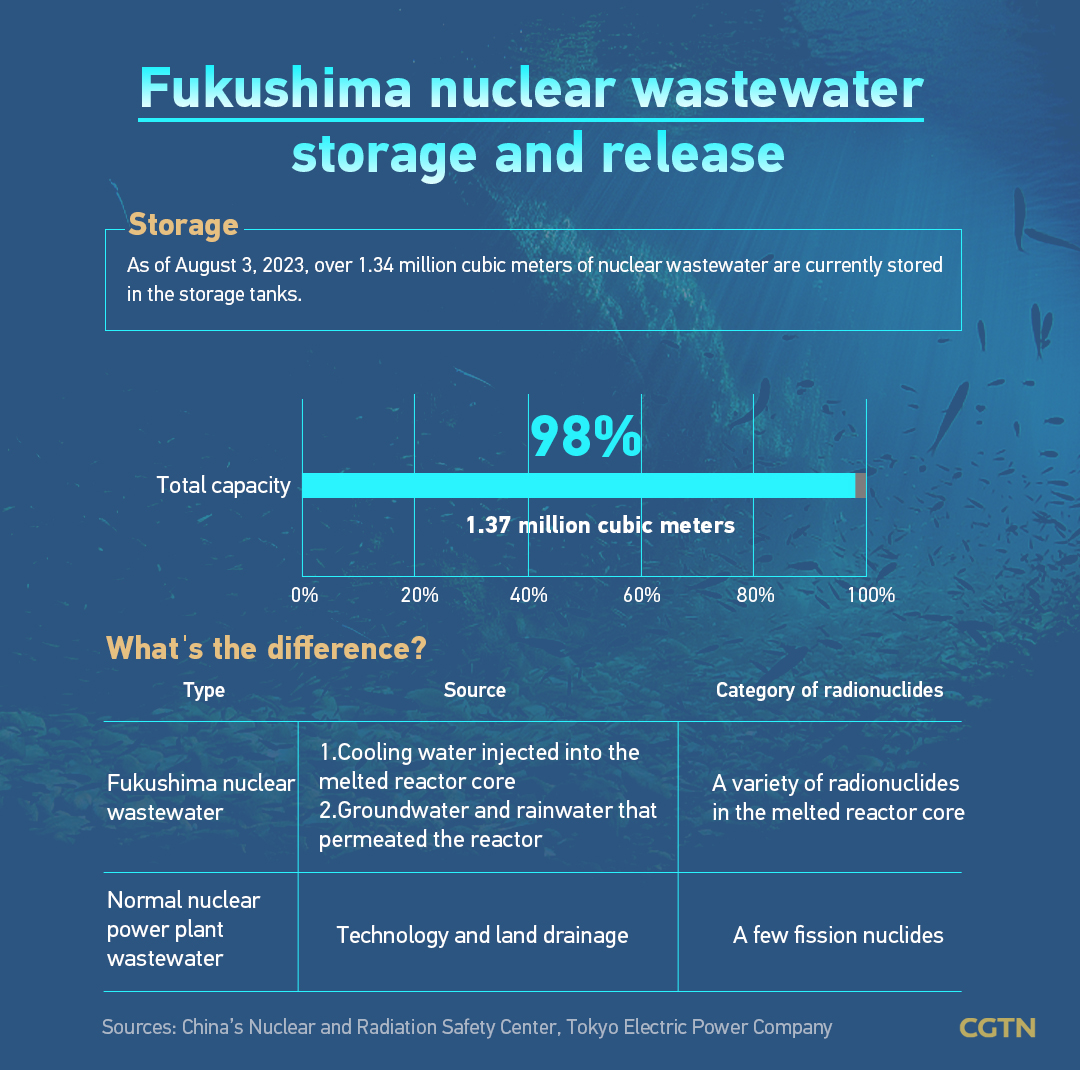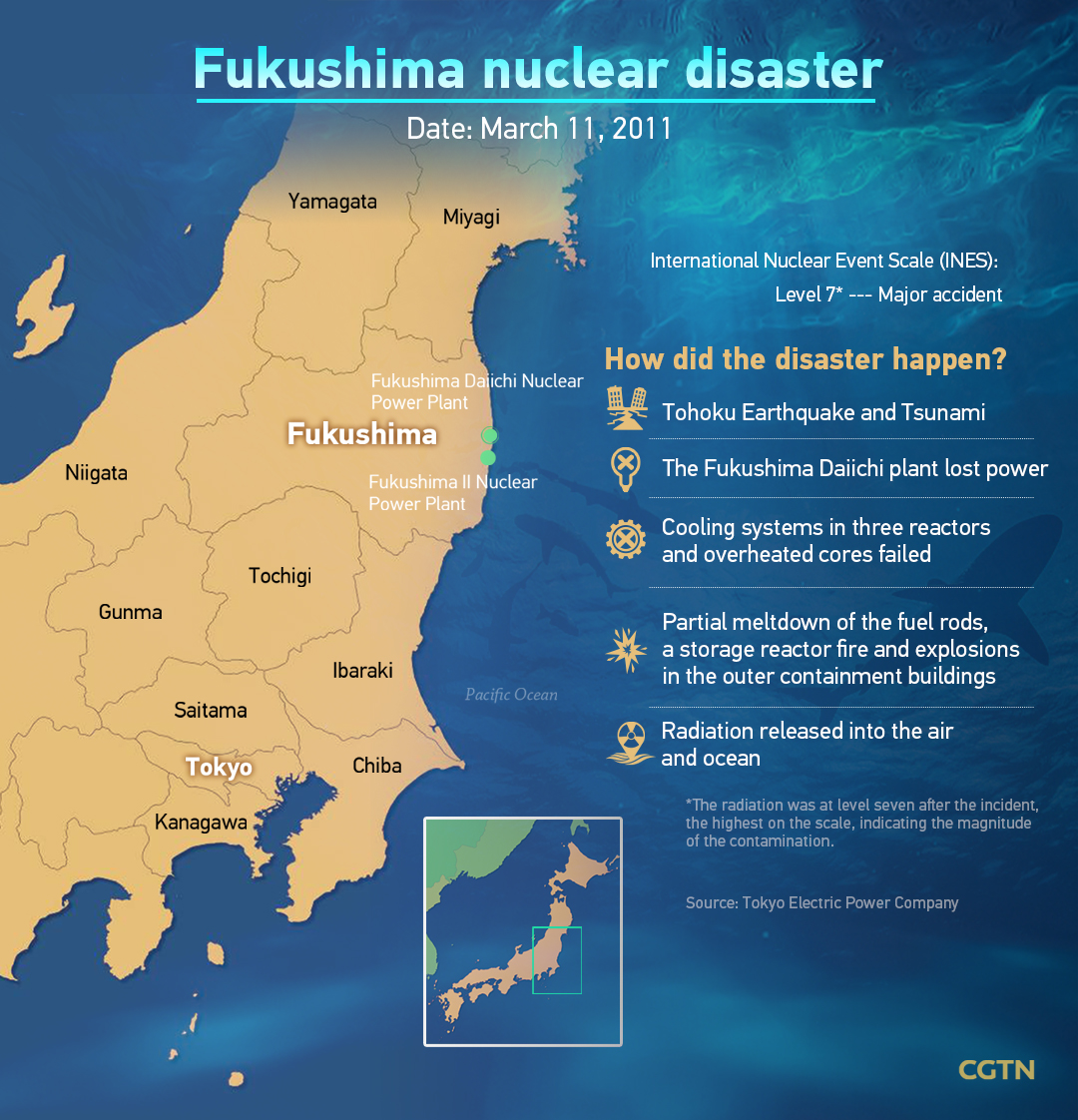Japan will start releasing nuclear-contaminated water from the wrecked Fukushima nuclear plant on Thursday in defiance of fierce objections from the international community, said the plant's operator, Tokyo Electric Power (TEPCO), when announcing a detailed plan on Tuesday.
The first discharge will total 7,800 cubic meters of treated water over about 17 days. The operator plans to release 31,200 tonnes of the treated water by the end of March 2024, with an emission of tritium at 5 megabecquerels, about 20 percent of TEPCO's annual discharge limit.

The plan came months after controversy, as authorities and experts are divided on the risk the radioactive substance tritium, which the nuclear-contaminated water contains and can't be removed by the water filtration technology, may pose.
Advanced Liquid Processing System is the technology that TEPCO used to remove the radioactive materials from the nuclear-contaminated water. Over the years, the nuclear-contaminated water has been continually treated to filter out all the removable harmful elements except tritium, then stored in tanks.
The operator built over 1,000 steel tanks on the site with a capacity of about 1.37 million cubic meters. As of August 3, 2023, over 1.34 million cubic meters of nuclear-contaminated water are currently stored in the tanks, which is 98 percent of the total capacity, according to TEPCO.
As the space is running out, the operator said building more tanks isn’t an option, and it has to free up space to safely decommission the plant. Under TEPCO's plan, it would take up to 30 years or even longer for nuclear-contaminated water to be released into the ocean.
The nuclear-contaminated water will be heavily diluted with clean water to a 40th of the concentration of radioactive material permitted under Japanese safety standards before being pumped into the Pacific Ocean via an undersea tunnel a kilometer off the coast.
Nuclear-contaminated water has fundamental differences from the discharge of a normally operated nuclear plant, either in terms of the original source, category of radionuclides, or disposal treatment, said Wang Wenbin, a Chinese Foreign Ministry spokesperson, in July.

The Fukushima nuclear-contaminated water came from the cooling water injected into the melted reactor core after the nuclear accident, as well as groundwater and rainwater that permeated the reactor. The nuclear accident, which occurred on March 11, 2011, was caused by the devastating earthquake and tsunami.